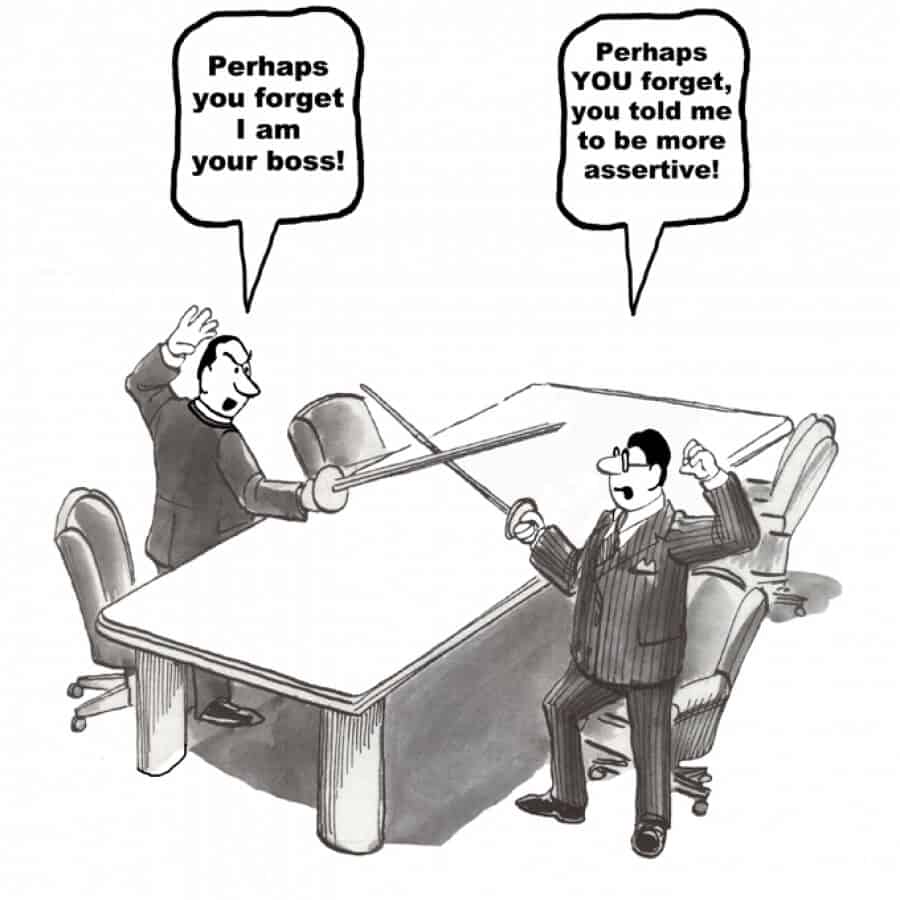The previous article discussed the customary terms of conflict and offered concrete examples to define our positions and interests. We learned how to analyse the perception of conflict and how to separate facts, interpretations, and emotions. There is no doubt now that conflict is an essential part of every human being’s life, and there is nothing wrong with that. Yet the paramount question is still relevant: what to do after you realise you’re involved in a conflict? How to work with it - and how to stand up for your rights and values without harming the opponent? I hope this article can shed some light on this practical topic.
How to stand up for your rights without offending anone? The easiest way of implicating someone in a conflict situation is «manipulation». I’m pretty sure everyone has heard this word a million times and has always thought they would never fall for it. What, by the way, is manipulation?
Psychologists hold that it is a version of social influence that aims to change the behaviour or perception of others through abusive, deceptive, or underhanded tactics. There are a few techniques for manipulating successfully, and one of them is called the «low-ball» technique.

Imagine this reality situation: Mike has some friends who really like to chill out over the weekend, and he prefers to stay at home as he’s very tired after work. One day his friends asked Mike to pick them up at the club, as he was the only one person at the company who had a car.
Mike wasn’t very happy as he had other plans, but no one really cared, so he had to say yes. It happened once, it happened twice. His friends got used to it, and it was almost impossible for Mike to say no as they would be very offended if he did.
You said yes once – but does that mean you have to say yes every time, doing things you don’t want to do just to satisfy your friends?
Of course it doesn’t. And that’s the right time to think about assertive behaviour. Assertiveness allows you to pursue your own objectives and stand up for your own rights, values, and beliefs, without feeling guilty about it. How to improve your assertiveness skills?
Well, here are some tips for achieving that goal.
- Collect all the facts before taking action, and try to stay objective and avoid judgmental statements.
- Control your emotions and behaviour, but express your feelings and thoughts in an appropriate way.
- Let your partner feel your support and understanding (even if it’s not always easy for you).
- Do your best to negotiate with your partner.
- Use descriptive language such as «no-guilt statements».
How does a «no-guilt» statement work, and what is it exactly?

Instead of judging the person you have some misunderstanding with, try to explain your own feelings and thoughts.
Let yourself be the centre of this situation, but don’t forget about your partner as well. Here’s an example of how it is supposed to work:
I feel __________, when you ___________, because you __________. And I suggest for us __________ .
What could Mike do in this situation? First, it is crucial to realise that his friends might consider what has been happening as a right. What is wrong with driving friends home if you’re free and have a car?
Friends have to help friends, have to support each other – that’s what they can think. And Mike can think that he’s exhausted, and his friends are just using him. Are these opinions mutually exclusive?
Not really. They wouldn’t understand one another before they spoke together.
What is more, Mike needs to talk to them correctly if he doesn’t want to lose his friends. He can yell something like: «Why don’t you just stop chilling? Why should I always pick you up like I’m your personal driver instead of spending my time like I want to? Why do you always think about yourself only? I’m done with it!»
That’s exactly how Mike feels, but is this the way to have a constructive dialogue? The same information can be verbalised differently.
Mike may say things like: «I feel like you use me when you ask me to pick you up because you don’t care if I have other plans for the weekend. What is more, that’s the only reason you call me. It makes me sad because we used to spend time together at the office before I bought a car. I suggest that we meet more often and go to parties together and call a taxi.»
That’s how Mike can talk about his feelings and decrease the level of his emotionality, and his friends are now able to understand what makes their communication process a faulty one.

Let’s take a look at one more example, and I suspect this situation is well-known to many of us. Mia recently graduated from her bachelor’s studies. Now she has to decide what to do next.
Her mother, Jessica, won’t allow Mia to study abroad. Mia’s not a little girl anymore, yet her mother issues an ultimatum: if Mia moves to a different country, she will stop talking to her daughter.
Jessica says she’s too old to live alone, and she can’t let Mia go. Jessica has been a great mother, so Mia should support her now. Moreover, Jessica thinks that Mia is so smart that she can get all the benefits of her education in her own country.
And it’s hard for Mia to understand her mother: doesn’t Jessica want her daughter to obtain an amazing education? Is Jessica so selfish that she can value her own happiness above Mia’s? And what is Mia supposed to do: to follow her dream to save her relationship with Jessica?
First of all, it is important to ask what Jessica’s real interest is. It’s actually not about the quality of Mia’s education. She’s mainly scared of living alone. She used to have her only child under control, and now she can’t even imagine her life without Mia.
To Jessica, Mia’s still her child, and she hasn’t yet experienced all the troubles ‘an adult life’ can offer. What she has to realise is that one day it’s going to happen. Sooner or later, Mia will separate from her mother. And it’s far better to choose «sooner» in this situation.
Mia’s interest is to show her mom she’s an independent girl, which is the most common interest of young people in «parent-child» conflicts. And Mia should understand that Jessica wants only the best for her daughter.
Mia needs to show her mother she is ready to take on responsibilities and also that she would never leave Jessica alone or forget her. That’s one example of Mia’s «no-guilt statements». «I still feel like I’m your little child when you don’t let me study abroad because you make decisions for me in important moments of my life.
I know why you’re so upset, yet you have nothing to worry about. You gave me a brilliant education, and I can now be responsible for my own life. And I suggest that we phone each other as often as possible, and I promise I’ll come to see you at least twice a month in the early months.
You won’t even notice I’m studying somewhere far from you!»
A «no-guilt statement» is really good as it simultaneously shows the feelings and dissatisfactions of both of the opponents, which is very useful in any conflict.
Moreover, even in some unpleasant situations such as manipulation, it is vital to analyse your partner’s point of view without forgetting your own.
Improving your assertiveness skills is the perfect way to transform negative communication into a positive experience and to start to understand the situation better.
Photos: Shutterstock
Read more here.
Support us!
All your donations will be used to pay the magazine’s journalists and to support the ongoing costs of maintaining the site.
Share this post
Interested in co-operating with us?
We are open to co-operation from writers and businesses alike. You can reach us on our email at [email protected]/[email protected] and we will get back to you as quick as we can.









